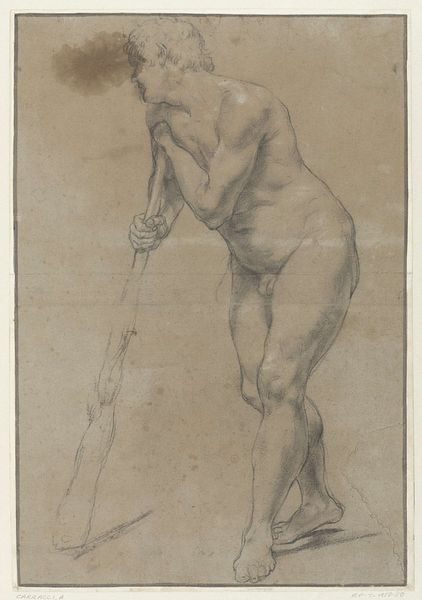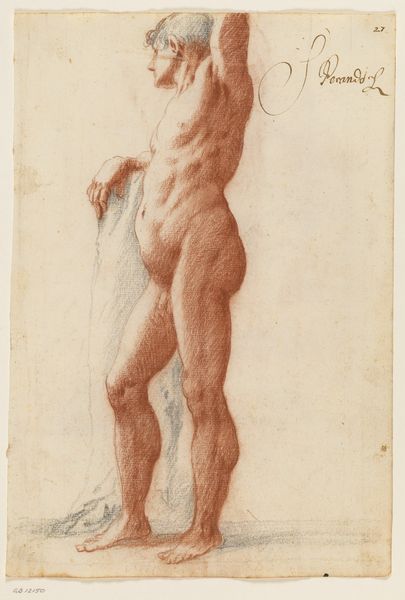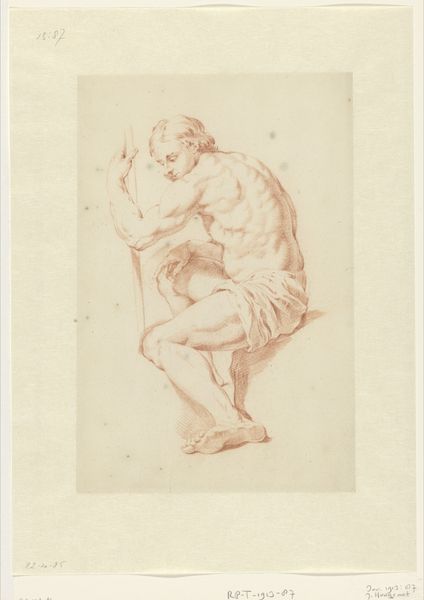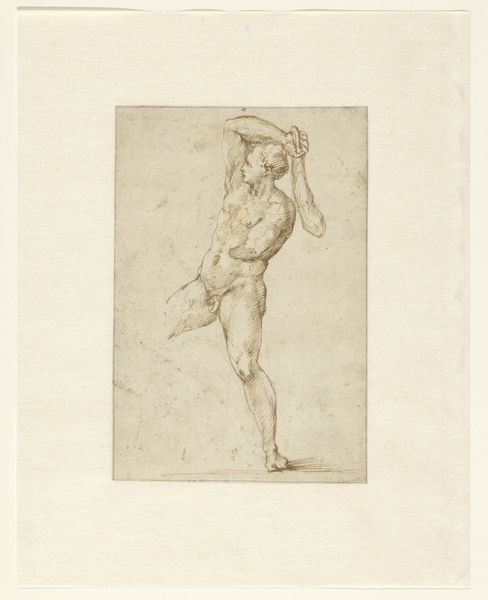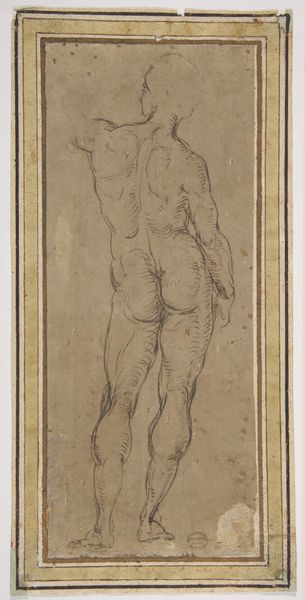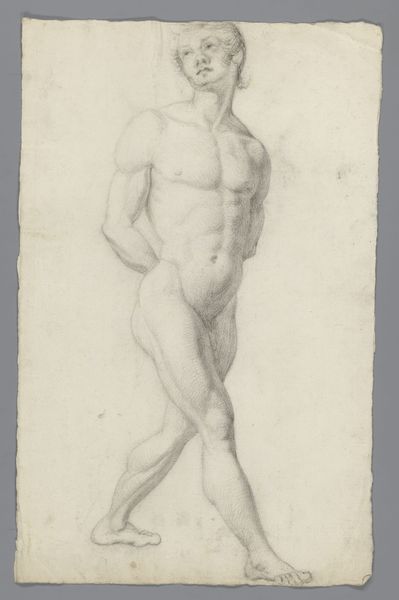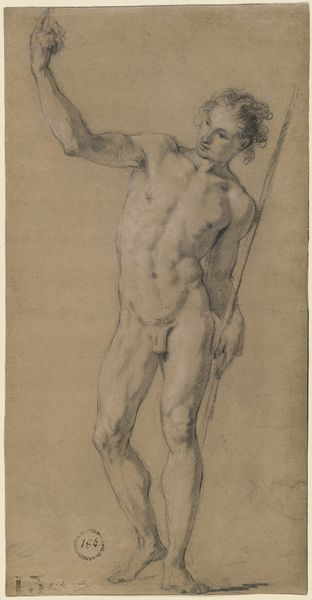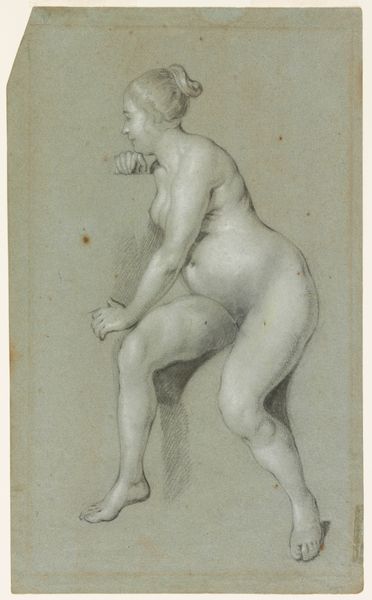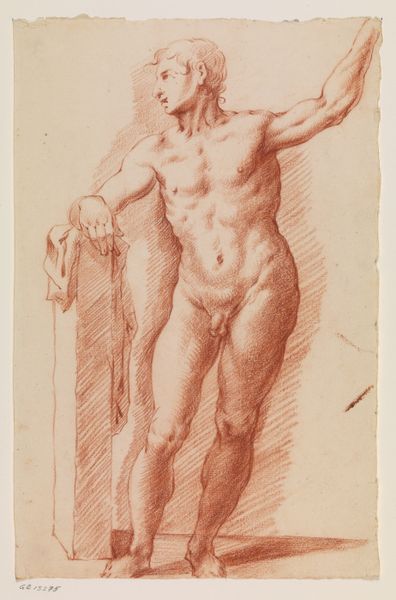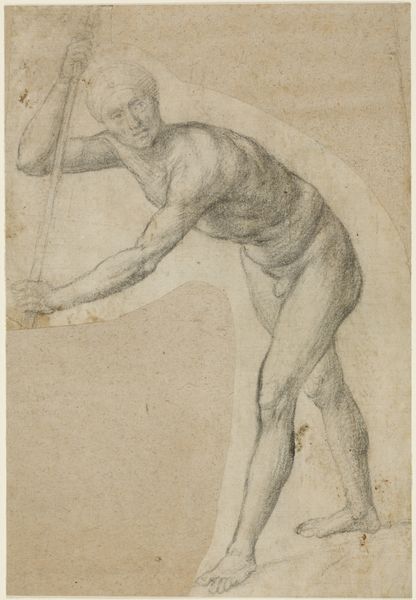
drawing, print, pencil, charcoal
#
drawing
#
baroque
# print
#
charcoal drawing
#
figuration
#
pencil
#
charcoal
#
nude
#
male-nude
Dimensions: 14 5/8 x 8 7/16 in. (37.1 x 21.4 cm)
Copyright: Public Domain
François Le Moyne made this black and white chalk drawing, titled "Standing Male Nude Seen from Below", in France during the early 18th century. It captures a male nude figure, his gaze lifted upwards, as if contemplating the heavens. In Le Moyne's time, the French Royal Academy of Painting and Sculpture was the pre-eminent art institution. Drawings like this one were crucial for academic training, where students honed their skills in depicting the ideal human form, often drawing from classical sculptures or live models. The exaggerated contrapposto, or counter-pose, emphasizes the figure's musculature, showcasing the artist's mastery of anatomy. But what does it mean to present the male nude in this era? It speaks to a culture deeply invested in ideals of beauty, strength, and heroism, yet one also marked by rigid social hierarchies. Le Moyne’s drawing, while seemingly classical, exists within a complex web of social expectations and artistic conventions. Historians delve into archival records, academic treatises, and social commentaries of the time to understand how images like this one both reflected and shaped the cultural values of 18th-century France.
Comments
No comments
Be the first to comment and join the conversation on the ultimate creative platform.
